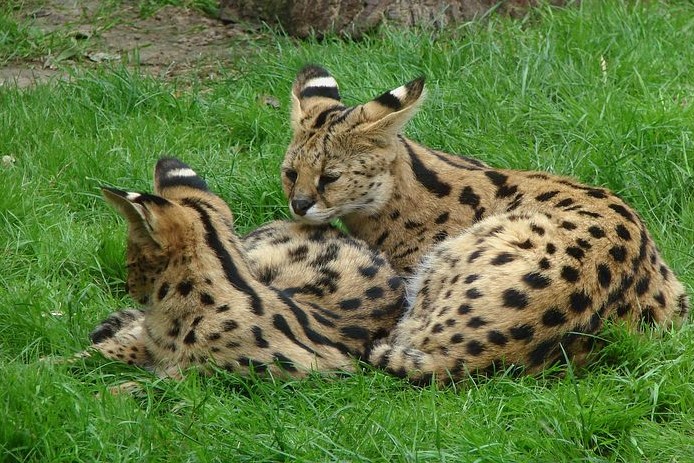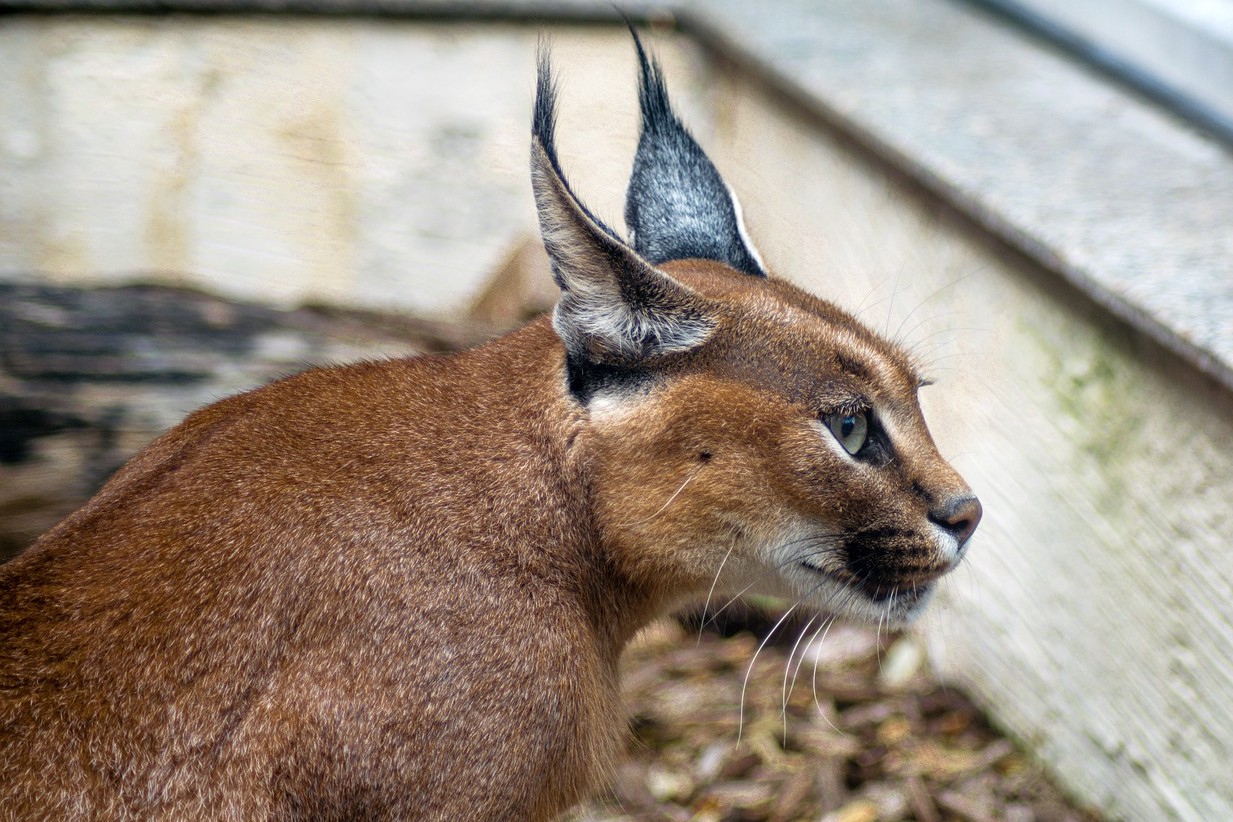It turns out that these two rare species of wild cats are well tamed. Therefore, it is possible that they will soon become pets. However, these unique creations are expensive. Let's find out everything about keeping them in the house, but first we’ll recall the way of life of their wild relatives.
Serval (Leptailurus serval) - long-legged shrub cat
The body length of this large animal can reach 135 cm, in height it grows to 65 cm, and the weight of males can reach up to 20 kg. Distinctive features are long paws, a small head, rounded erect ears and spotted coat color. In the wild, a shrubby cat lives in Africa (excluding desert areas).
Animals settle near ponds and hunt in tall grass. They jump high well and catch birds in the air, get rodents from their shelters, and can swim.

An interesting fact: as a result of crossbreeding with a domestic cat, an attractive breed of savannah cat appeared.
Caracal, or steppe lynx (Caracal caracal) - a cat with a puma color
The name of this species comes from the Turkic word “karakulak” (karakulak), which translates as “black ear”. The fact is that these animals have dark ears at the back (outside).
The beast looks like a small copy of the lynx (also has tassels on the tips of the ears), but the sand color of the fur coat is more like a puma (Puma concolor). Body length - 65-80 cm, height - up to 45 cm, body weight - up to 20 kg. Steppe lynx preys on birds (including young ostriches), rodents, hedgehogs, foxes.
Caracal perfectly crosses with the African serval. As a result, currently there is a cervical and caravan.

The content of home servals and caracals
Domesticated cats that were raised in special kennels are friendly and gentle, however, due to their very large sizes, it is not recommended to bring them to families with children under 5-6 years old. After all, a pet can scratch a lot if the child is too annoying. Cats are cautious and even shy with strangers, but they love to play with the owners, bring a ball and are able to learn several teams.
These large pets are kept in a private house with an aviary, as the animal needs active walks. Cohabitation with rodents, parrots, canaries and ferrets is impossible, since the hunting instinct will inevitably make itself felt.
Animals do not need special care. Like all cats, they clean their hair on their own. For entertainment, you can build a pool in the courtyard of the house. The tray may be ordinary, but larger.
The average life expectancy is 13-18 years. Inoculate pets with cat vaccines.
Raising cats of wild species
Patience is especially useful in this matter. A little mustached friend is acquired at the age of 2-3 months. The serval and caracal kitten strives to try everything on the tooth (like little puppies), so from childhood he needs to be trained in the "You Can't" team.
If the baby does not obey and continues, for example, to nibble the wires, after a strict command, direct a stream of spray from him. This should take by surprise and interrupt the unwanted action.
Do not let play with your limbs, otherwise the cat and after growing up will not give up this fun. In addition, from an early age, accustom him to a leash and walks in the yard, because without physical activity he will be uncomfortable.
Feeding Features
In the diet of these predators should be present:
bird (chicken, turkey, game);
beef;
rodents;
rabbit;
fish;
a raw egg.
So, a pet weighing 10 kg per day is fed 350-500 g of meat. It is enough to organize 1-2 meals per day. But in connection with the active growth of kittens feed more often and more. If the beast has not finished eating, after 10 minutes the food should be removed.
Super-premium cat food is also suitable. But if you still prefer natural nutrition, then up to about 3 years, you must additionally give vitamins and minerals. Remember that calcium is very important for the proper development of the skeleton.
It is prohibited:
pork;
salt;
any seasonings and spices.
How much does serval and caracal cost?
The price of serval and caracal depends on the country, the status of the nursery, the class of the kitten. For babies, breeders ask an average of 7 thousand cu At the same time, at the age of six months, they are strongly recommended to be neutered / sterilized, since it is very difficult to deal with tags.
Please note: you need to take a kitten only in specialized nurseries, in which animals are taught to communicate with humans from early childhood. And it is better if the kids are not kept there in street cages, but in the house.
 Select language
Select language 





.jpg)
.jpg)
.jpg)
.png)
